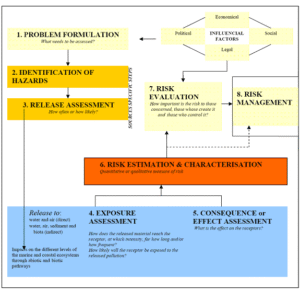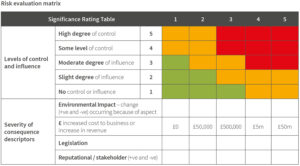Back to: Environmental Biology 400 Level
Welcome to class!
Have you ever thought about what could happen if toxic chemicals accidentally leak into a community river or if an oil spill spreads across a mangrove forest? How do we measure the danger it poses to people, animals, and the environment? That’s where Environmental Risk Assessment (ERA) comes in. It helps us identify potential environmental dangers before they become disasters—allowing us to act early and wisely.
Environmental Risk Assessment
What is Environmental Risk Assessment?
Environmental Risk Assessment is a scientific and structured process used to estimate the likelihood and consequences of harmful environmental events, especially when dealing with pollutants, industrial activities, or development projects. It helps decision-makers understand how a particular action or substance could affect human health or the environment.

Purpose of Environmental Risk Assessment
To identify potential hazards before they cause harm
To assess the level of risk to humans, animals, and ecosystems
To guide environmental planning, policy-making, and project design
To support safe development and responsible industrial practices
Key Components of Environmental Risk Assessment
Hazard Identification
This involves recognising substances or activities that can potentially cause environmental harm. For example, a factory releasing heavy metals into the Ogun River poses a hazard to aquatic life and communities downstream.
Dose-Response Assessment
This step examines how much of a substance (e.g., pollutant) is harmful and how living organisms react to different levels of exposure. For instance, at what concentration does oil in the water begin to kill fish?

Exposure Assessment
Here, we determine how people, animals, or the environment might come into contact with the hazard—through air, water, food, or soil. For example, are local farmers using contaminated water from a stream to irrigate their crops?
Risk Characterisation
This combines information from the previous steps to estimate the overall risk, including how serious it is and who or what is most vulnerable.
Applications of Environmental Risk Assessment
Siting of new industries or landfills
Oil spill response planning
Assessing the safety of pesticide use in agriculture
Evaluating the impact of mining activities
Planning for climate-related disasters like flooding or erosion
Example from Nigeria: Lead Poisoning in Zamfara State

In 2010, high levels of lead contamination were discovered in several communities in Zamfara due to illegal gold mining. An environmental risk assessment revealed dangerous exposure levels in children, prompting government and NGO action to clean up the environment and introduce safer mining methods.
Summary
- Environmental Risk Assessment (ERA) identifies and evaluates environmental hazards.
- It helps predict the likelihood and impact of harmful events.
- ERA includes four steps: hazard identification, dose-response assessment, exposure assessment, and risk characterisation.
- It is used in pollution control, disaster preparedness, agriculture, and industrial development.
- Nigeria’s response to the Zamfara lead poisoning crisis is a strong example of ERA in action.
Evaluation
- Define Environmental Risk Assessment.
- List and explain the four key steps of ERA.
- Why is exposure assessment important?
- Mention two real-life uses of ERA in Nigeria.
- Describe what happened in the Zamfara lead poisoning case.
Brilliant effort, champion! Understanding Environmental Risk Assessment gives you the power to protect both nature and communities. Keep your curiosity alive—Afrilearn is always here to support your growth every step of the way.
